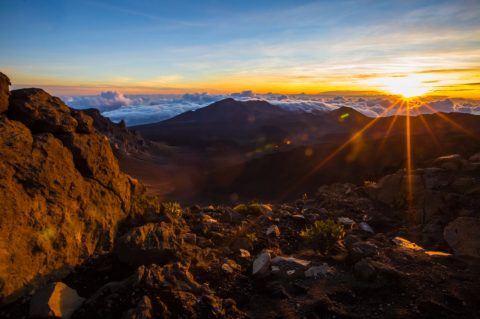Read Before You Leave – Hawaii
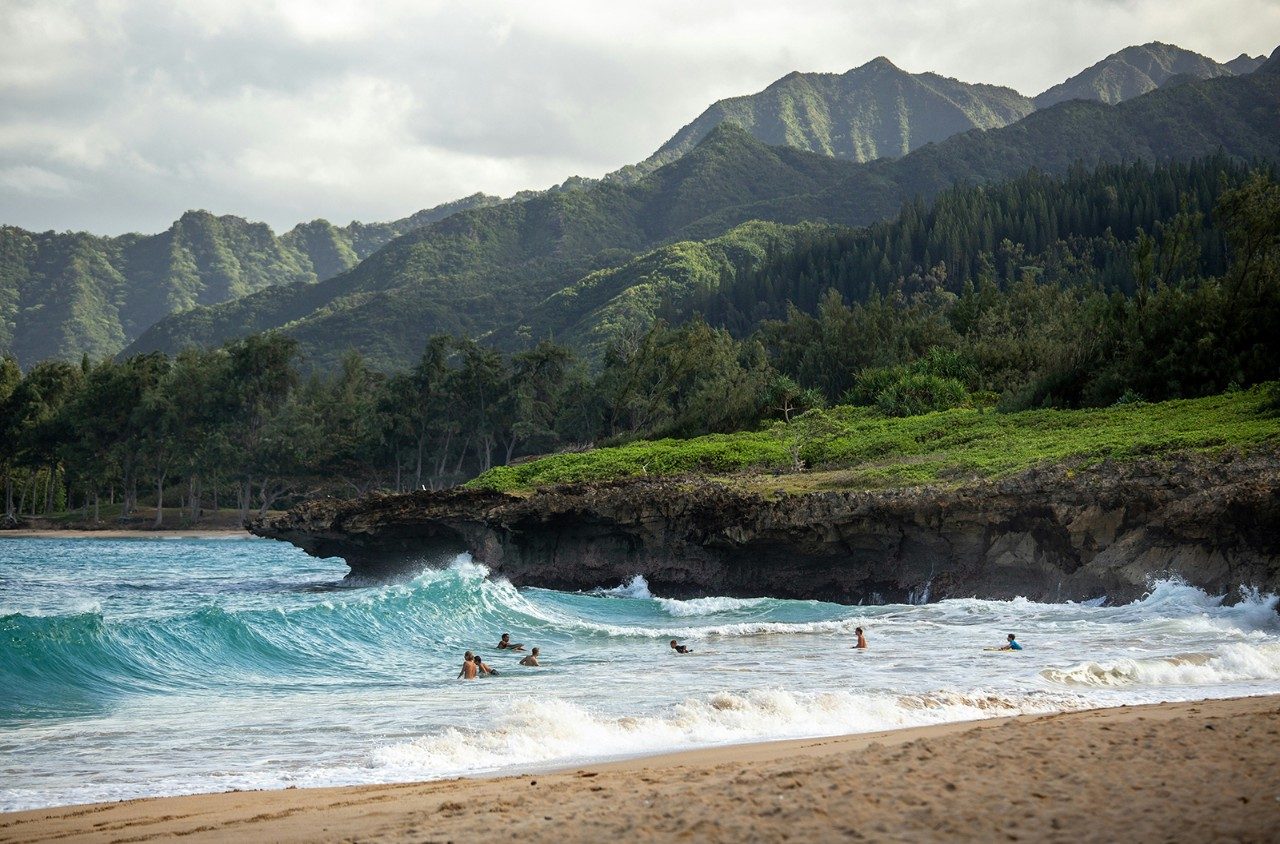
While you can easily find a hamburger in Hawaii, America’s 50th state has its own unique culture and language – and food, too. Made up of hundreds of islands and atolls, travellers usually visit the six main ones: Hawaii, Maui, Oahu, Lanai, Molokai and Kauai. Among them you can find pristine stretches of coast as well as the most hotel-studded beach ever (we’re looking at you, Waikiki). Since Honolulu is the capital and gateway to Hawaii, we’re focusing on the city and its island of Oahu. Hawaii is the birthplace of big-wave surfing, loud shirts, ukuleles and poke bowls. Add your holiday glow to that list with our handy ‘Read Before You Leave’ travel advice guide.
Flight time to Hawaii
Qantas fly time from Sydney to Honolulu is about nine and a half hours. Most flights from Brisbane, Melbourne, Adelaide and Perth stop over in Sydney.
Entering the US
Australia is a participant in America’s Visa Waiver Program, which means Australians don’t need a visa for visits of 90 days or less. We must, however, obtain an Electronic System for Travel Authorization (ESTA) through the Department of Homeland Security site. Authorisation is usually granted on the spot but it’s advisable to apply at least 72 hours before you travel in case there’s an issue. ESTA-approved travellers also need a (machine-readable) ePassport.
If you overstay, the American government could arrest, deport or even bar you from returning to the States.
Landing at Honolulu Airport
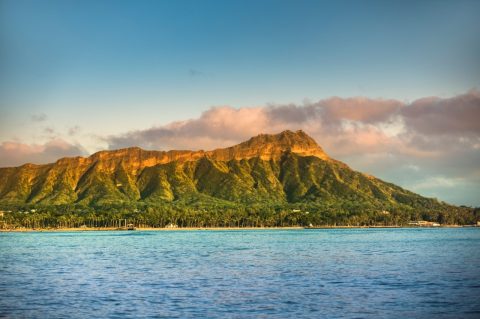
Daniel K. Inouye International, otherwise known as Honolulu International, is one of the busiest airports in the United States. Prior to the pandemic, more than 21 million travellers passed through each year. If you’re transiting to another island, it’s a five-minute walk between the international and domestic terminals. There’s also a free shuttle bus.
The airport is located 16 kilometres from Waikiki, or about 25 minutes’ drive. There are taxi ranks and several rideshare pickup zones outside the baggage-claim area. Alternatively, The Bus, which shuttles passengers all around the island of Oahu, starts at US$3 (about AU$4.58) one-way.
Check-in for Qantas-operated flights is in Lobby 4 on Level 2.
SEE ALSO: The Ultimate Guide to Oahu
Medical advice for Hawaii
- Medical facilities in Hawaii are similar to those in Australia but can be much more expensive. Make sure you purchase comprehensive travel insurance before your trip.
- While no specific vaccines are recommended for travel to the US mainland or the Hawaiian islands, it’s worth checking the US Centers for Disease Control and Prevention for updates on infectious disease outbreaks.
- Make sure your basic vaccinations are up to date and consider shots for measles, hepatitis A and B and Japanese encephalitis.
Hawaiian transport tips
Public transport on Oahu consists of The Bus, which has extensive routes radiating out from Honolulu. The Waikiki Trolley visits major tourist destinations and has multi-day tickets with unlimited rides. Taxi stands can be found at airports, shopping centres and many hotels, otherwise you’ll need to order one as hailing a cab isn’t the norm. Uber, Lyft and locally owned holoholo operate across the larger islands but service can be patchy the further you get from tourist hubs.
Many tourists opt to rent a car, moped or motorcycle to do their own exploring. Rentals are in high demand (and in some cases eye-wateringly expensive), so it’s definitely worth booking ahead with companies such as Avis and Hertz.
Money in Hawaii
At the time of writing, the Australian dollar was buying around 67 US cents. Check a reliable currency conversion service for up-to-date foreign-exchange rates.
Confirm with your bank that you won’t be hit with extra fees when using your credit card in Hawaii. Your Australian bank and American ATMs may charge you for withdrawing money from your debit card, too, so it might be worth organising a travel card (most banks have one) with low or no fees to use while you’re away.
In any case, inform your bank of your travel plans, lest overseas purchases are misconstrued as fraud and your card is cancelled.
Finally, tipping in the US is such a complex ritual that we have addressed the etiquette here.
Hawaiian weather
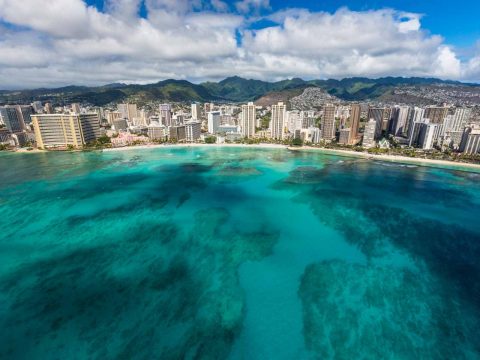
Hawaii is perpetually pleasant: the weather ranges from hot and dry during the summer months to warm and wetter in the winter. Hawaiian islands all have unique microclimates – incredibly, it’s often possible to ski on Mauna Kea on the Big Island (also known as the Island of Hawaii) during winter – and have après ski drinks on the beach after. On Oahu, the coolest months are January and February – but it’s only chilly enough for a jumper or light jacket – and the water is warm enough to swim year round.
SEE ALSO: The Best Things to Do in Maui
When to go to Hawaii
Because the weather never dips too far below 20 degrees Celsius, tourism to Hawaii tends to depend more on the weather in other places. During the Northern Hemisphere winter, North Americans and Japanese tourists escape chilly climates for a sunny island getaway. The peak tourism season runs from December to April (with another spike during the US summer holidays). It’s also the best time to go whale-watching as thousands of kohola (humpback whales) travel to Hawaii from colder waters to mate and nurse their young.
Crowds thin in May and June, but you’ll still find plenty going on: Lei Day (1 May) celebrates the ancient art of lei-making with competitions and demonstrations, while the King Kamehameha Floral Parade every June features vibrantly decorated floats, marching bands and traditional pa'u riders (female horse riders wearing traditional long, colourful skirts). Music lovers flock to the annual Waikiki Steel Guitar Week and Ukulele Festival, both held in July.
The Northern Hemisphere autumn months are great times to go – fewer tourists, lower prices and lots of sunshine. The Aloha Festival in September is an extravaganza of music, hula and history with highlights like Hawaii’s largest block party. The Honolulu Pride Parade is a major October drawcard, as is the Hawaii Food & Wine Festival’s calendar of cocktail tastings and cooking classes. The Vans Triple Crown of Surfing – aka the Super Bowl of surfing – kicks off in December. See the best of the best tackle famous breaks like Sunset Beach on the north shore of Oahu.
Dress code in Hawaii
Thongs are called slippers (“slippahs”) in Hawaii and they count as daywear, beachwear and eveningwear. This will go down well with most Australians – throw on your favourite pair of Havaianas and you’re basically covered for footwear. However, there are a lot of excellent hikes around Hawaii, so if you’re planning to do anything more energetic than beach-lounging, bring along a pair of sturdy hiking boots or sneakers. In terms of clothing, people really do wear Hawaiian shirts (called aloha shirts here) and muu-muus; bright, tropical prints fit right in. A pair of swimmers with some denim shorts and a T-shirt or a sundress pulled on over the top will suffice for most daytime activities in Hawaii. If you’re planning to hit the bars and restaurants of Waikiki, you’ll need something slightly more elaborate: think fashionable but still relaxed – there’s no need for stockings or tight tailoring. If you’re travelling in the cooler months, bring along a cardigan and a lightweight waterproof jacket.
Tap water in Hawaii
Hawaiian tap water is naturally filtered through porous volcanic rock and is among the best quality in the US.
Driving in Hawaii
Australian travellers don’t need an International Driving Permit as major car hire companies will accept an Australian licence. In Hawaii, roads are often built into steep cliffs, so taking your eyes off the road to admire a distant breaching whale is not recommended. Likewise, in keeping with the island pace, local drivers tend to stick to a steady, languid speed. It goes without saying but tourist road rage is not appreciated.
Insurance policy
Without comprehensive travel insurance, travellers will pay through the nose for medical treatment in the US. Smart Traveller advises that a visit to the GP for a sore throat, say, will run up a bill in the hundreds of dollars – and this is before any extras such as blood tests or medication. It’s also important to see if your policy covers other issues such as delays and cancelled flights.
Language in Hawaii
There are two official languages in Hawaii: English and Hawaiian. The local language is spoken often and taught in schools. There’s no need to learn Hawaiian – English is spoken everywhere – but knowing a few words will endear you to locals: mahalo means “thank you”, wahine (pronounced wahin-ay) and kāne (pronounced kahn-hay) mean “women” and “men” respectively (useful when looking for bathrooms). Of course, aloha means both hello and goodbye, but it’s more than that: it’s a way of being. Hawaiians do things with aloha, and it conveys love, affection and good feelings.
SEE ALSO: Why Molokai Could Be Hawaii's Most Underrated Island
Etiquette in Hawaii
- Don’t refer to people who live in Hawaii as “Hawaiian”. The word only applies to people of native Hawaiian descent, who make up 10 per cent of the population. Everyone else can be referred to as “locals”.
- It may feel like a gesture straight out of a movie, but the presentation of a lei (flower garland necklace) is a symbol of goodwill that’s been a part of Hawaiian culture since Polynesians arrived on the islands in 400 AD. It is polite to accept the lei and to wear it as long as you’re in the presence of the giver.
- This is where surfing was invented and it’s a serious pastime. If you’ve come to Hawaii to surf, check which beaches are accepting of outsiders before you drop-in on a local.
Where to stay in Hawaii
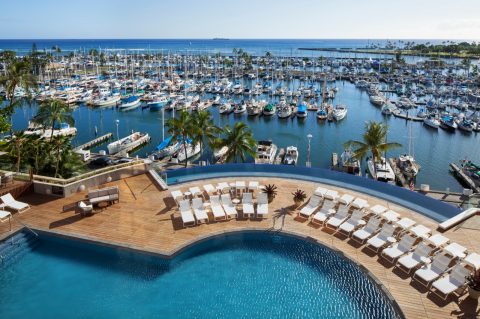
Oahu is the most-visited of the Hawaiian islands and many major hotels and attractions are clustered in the Waikiki area of Honolulu. It’s a lively spot with plenty of accommodation for various budgets as well as restaurants, shopping and nightlife. Waikiki Beach is always packed and the area is very focused on tourism.
The Leeward Coast to the south-west of the island offers a slower, less frenetic pace than the downtown area. There are still plenty of hotels, as well as beautiful beaches and a championship golf course.
Even more serene is the north shore, which is lush and mountainous, with legendary surf beaches. It’s about an hour from Waikiki and offers a more local experience – think roadside shrimp stands and surfboards leaning on shack walls.
For a primer on Hawaii’s other islands, head to our guide here.
Phone calls and mobile data
Before you land, disable data roaming and don’t answer incoming calls on your mobile phone if you want to keep your monthly bill in check. If you need to make calls in Hawaii, invest in a prepaid travel SIM card (you can buy your international SIM before you leave Australia) or buy a US SIM for local calls and mobile data. Remember, this will only work if your phone is not locked to your Australian carrier. Also note that Australian mobile phones operate on a GSM network. In America, both GSM and CDMA networks are in operation. This means that your Australian handset won’t work on a CDMA network such as Verizon. See WhistleOut for more in-depth information on using your mobile phone overseas.
Calling Australia from Hawaii
To call Australia, dial +61 followed by the phone number – including the area code minus the zero. So, to call a Sydney landline telephone, you would dial +61 2 then the phone number. To call a mobile phone, use the same country code and dial the mobile number minus the first zero.
Gadgets and electronics in Hawaii
Power sockets in the US (120V) have a lower voltage than those in Australia (230V) and a higher frequency (60Hz compared with Australia’s 50Hz). Most gadgets are designed to work on a range of frequencies and voltages but double-check if you’re in doubt. Power plugs and sockets also have a different configuration, so you’ll need an adaptor.
Handy apps and websites
- The Australian Consulate-General in Honolulu for emergencies.
- Go Hawaii for researching destinations, hotels, activities, tours and more.
- Hawaii Weather Now for real-time weather information and alert notifications in the case of extreme weather.
- Daniel K. Inouye International Airport for information on flights, weather, traffic, parking, terminal locations and airport shuttles.
- Smart Traveller for up-to-date safety information.
- The Qantas Travel Ready Hub for the latest travel requirements.
- Travel Doctor for pre-travel health advice.
